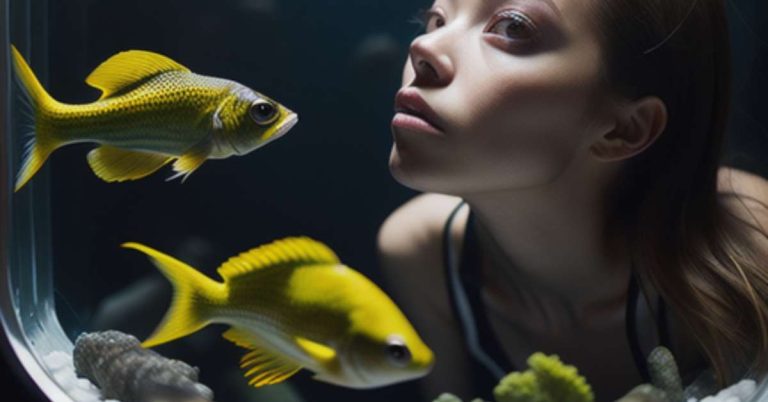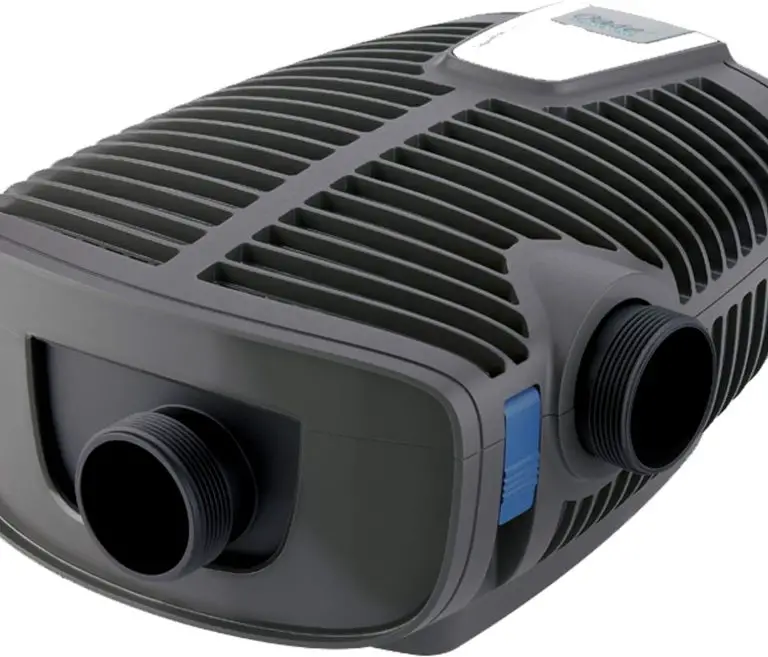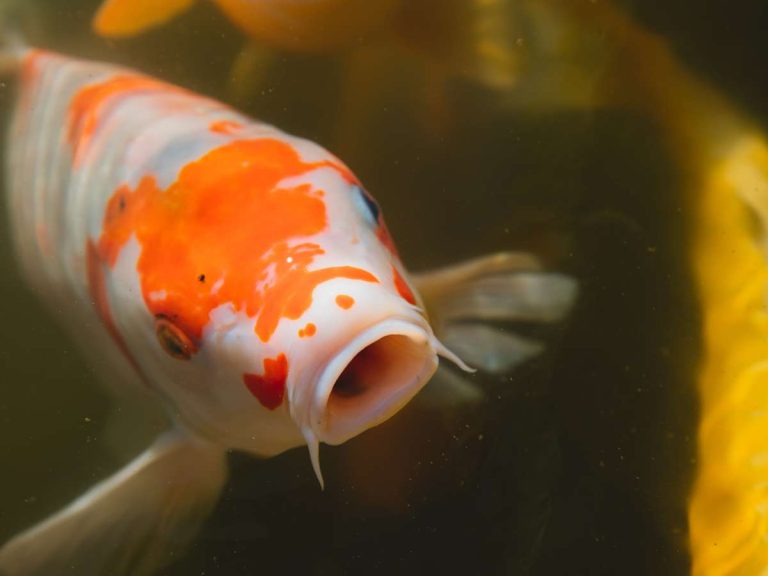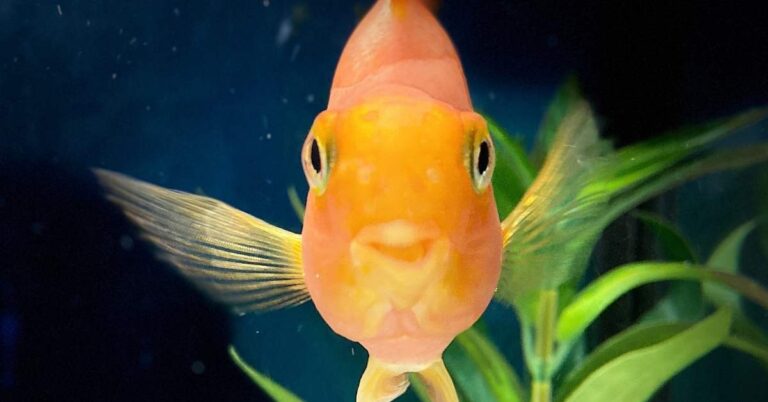Understanding Koi Behavior: Your Comprehensive Guide
Koi, with their vibrant colors and graceful movements, have long captivated the hearts of pond enthusiasts and fish keepers worldwide. But beyond their mesmerizing beauty lies a world of intricate behaviors and patterns that often remain a mystery to many. Whether you’re a seasoned koi keeper or a curious newcomer, understanding these behaviors is crucial to ensuring the health and happiness of these aquatic gems.
In this comprehensive Koi Behavior Guide, we delve deep into the world of koi, demystifying their actions and shedding light on what’s normal and what’s cause for concern. From playful splashes to sudden bouts of inactivity, we’ll help you decode the language of koi, ensuring that you’re always in tune with your finned friends.
Dive in (pun intended!) and unlock the secrets of koi behavior with us!
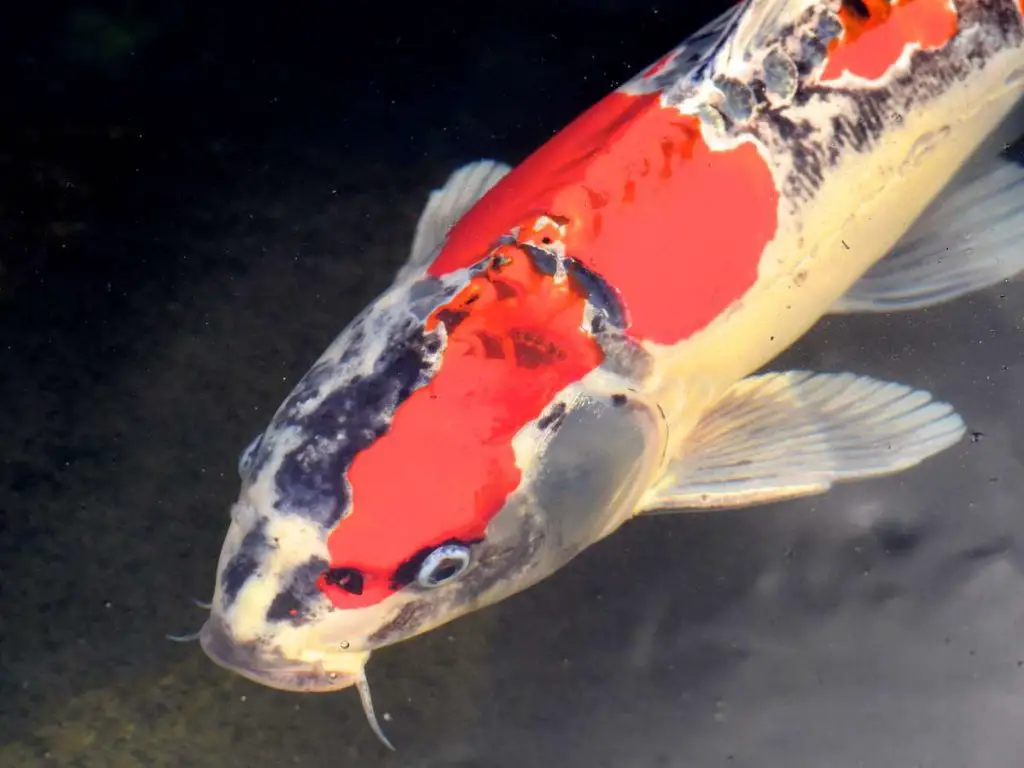
Why understand your koi fish’s behavior?
A deep understanding of koi fish behavior is crucial for their well-being and overall pond management. By unraveling the mysteries of their behavior, we can create an environment that promotes their happiness and health.
Additionally, understanding their behavior patterns helps us ensure successful breeding and reproduction, which is essential for maintaining a thriving koi population.
When you can better comprehend the behavior of your colorful friends, you’ll also be better equipped to identify and address any potential behavioral issues that may arise.
Just like humans, koi fish can experience stress and may exhibit abnormal behaviors if their needs are not met or if they’re experiencing health problems. By recognizing these signs early on, we can intervene and provide the necessary care to prevent any further complications.
| Behavior | Significance | Possible Indications |
|---|---|---|
| Surface feeding | Indicates active search for food | Positive sign of appetite and overall health |
| Reluctance to feed | May indicate stress, illness, or poor water quality | Monitor water parameters and check for signs of illness |
| Hiding or resting | Allows koi to conserve energy and seek shelter | Stress, poor water quality, or natural behavior during hot weather |
| Flashing against objects | Indicates discomfort or irritation | Presence of parasites or skin irritations |
| Erratic swimming | Can be caused by various factors including poor water quality or stress | Regularly test water parameters and reduce stressors |
| Swimming upside down | Sign of swim bladder issues | Consult a veterinarian or koi fish expert |
Overview of koi fish behavior patterns
When it comes to understanding koi fish behavior, it’s important to have a good grasp of their daily routines, social interactions, and response to environmental changes. Koi fish, like any other living creatures, have their unique patterns and characteristics that shape their behavior in various ways.
Daily routines and feeding behavior
Koi fish have a predictable daily routine that revolves around feeding time. These beautiful creatures are opportunistic feeders, and they eagerly await their meals. As a koi owner, it’s crucial to establish a consistent feeding schedule to maintain their health and well-being. Observing their feeding behavior can also give you an insight into their overall condition and appetite.
Social interactions within a koi pond
While koi fish spend a significant amount of time peacefully swimming around the pond, they also engage in social interactions with their fellow koi. These interactions can vary from friendly nudging and chasing to more aggressive territorial behavior. It’s fascinating to observe the dynamics within a koi pond and the unique hierarchy that emerges. Understanding these social behaviors can help you ensure a harmonious environment for your koi fish.
Response to environmental changes
Koi fish are extremely sensitive to changes in their environment, and it’s important to pay attention to their behavior when adjustments are made. Whether it’s a change in water temperature, pH level, or the introduction of new pondmates, koi fish will react in various ways. Some may become stressed and exhibit unusual behavior, while others may adapt more easily. Being aware of their responses to environmental changes allows you to address any issues promptly and maintain a healthy and thriving koi population.
Overview of common koi fish behaviors
When it comes to koi fish, understanding their behaviors can provide valuable insights into their overall health and well-being. By recognizing the significance of specific behaviors, identifying signs of stress or illness, and acknowledging normal behavioral variations, you can ensure that your koi are thriving in their environment.
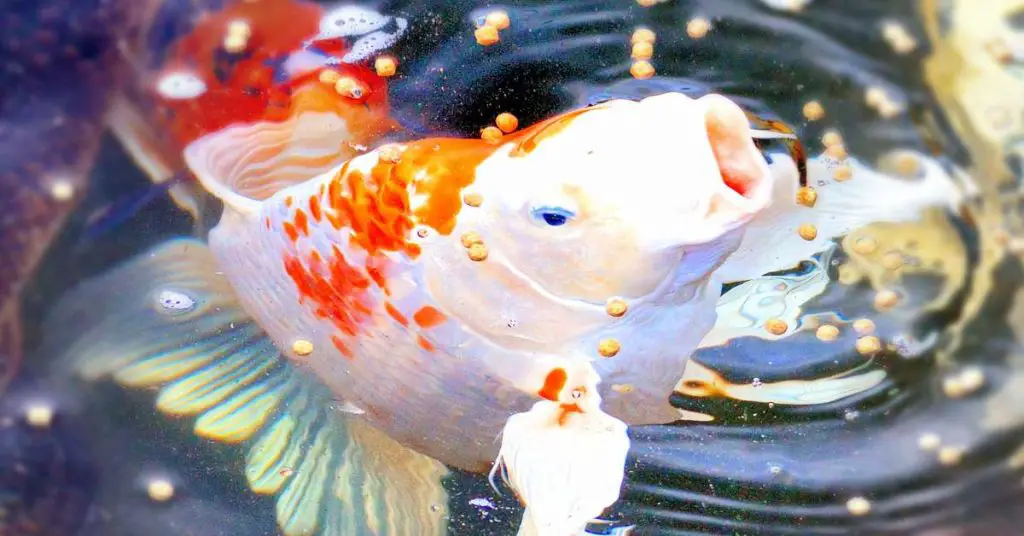
Koi fish, like any other living creatures, exhibit a range of behaviors that can convey important messages. One of the most common behaviors seen in koi is surface feeding. This behavior indicates that the fish is actively searching for food and is a positive sign of their appetite and overall health. Conversely, a lack of appetite or reluctance to feed may be a sign of stress, illness, or poor water quality. Therefore, observing their feeding behavior can provide valuable insight into their well-being.
Another significant behavior to look out for is a koi’s hiding or resting behavior. Koi fish may hide or rest in the bottom of the pond, especially during hot weather or when they feel threatened. This behavior allows them to conserve energy and seek shelter from potential predators. If you notice your koi spending an excessive amount of time hiding or resting, it may be an indication of stress or poor water quality.
Identify signs of stress or illness in koi fish
Koi fish, just like any other animals, are susceptible to stress and illness. Being able to identify the signs and symptoms can help you address any potential issues promptly. Some common signs include decreased appetite, sudden weight loss, lethargic behavior, or unusual swimming patterns. When koi fish are stressed or unwell, they may also exhibit physical changes like inflamed or discolored gills, sores, or unusual growths. By regularly observing your koi and being familiar with their normal behavior, you can quickly spot any abnormalities and take appropriate action.
Recognize normal behavioral variations among koi individuals
It’s important to remember that each koi fish is unique and may display variations in behavior. Some koi fish may be more active and have a tendency to swim closer to the water’s surface, while others may prefer to spend more time near the bottom of the pond. Similarly, individual koi may have different levels of aggression or dominance, which can impact their interactions with other fish in the pond. By understanding and recognizing these normal behavioral variations, you can ensure a harmonious and balanced environment for your koi.
Guide to breeding behaviors of koi fish
Koi have some fascinating behaviours when it comes to mating – name an animal that doesn’t!
Here’s the basics on the intricate dance of koi courtship, spawning, and beyond.
Courtship rituals and mating behaviors
When it comes to koi fish breeding, there’s a fascinating world of courtship rituals and mating behaviors to explore. During the courtship phase, male koi fish will often chase and nudge females, sometimes even pushing them up against the walls of the pond. It may seem a bit rough, but it’s just their way of showing interest and asserting their dominance.
Once the female is ready to spawn, she will release eggs, and the male koi will fertilize them externally. This is known as “spawning.” You may witness a flurry of activity as the male chases the female around the pond, nudging her abdomen to help release the eggs. It’s truly a sight to behold!
Nest building and egg deposition
After the eggs have been fertilized, the female koi will look for a suitable spot to lay them. This is where the male’s previous courtship efforts come into play. He will create a nesting site by stirring up the substrate at the bottom of the pond, creating a depression known as a “nest.” The female will then deposit her eggs in this carefully prepared area.

The koi’s nesting behavior is remarkable to witness. The male will diligently scoop up mouthfuls of substrate, swim to the surface, and spit it out, creating a cloud of dirt. He repeats this process until he’s created a spacious nest for the eggs. This nest-building behavior not only protects the eggs but also demonstrates the male’s commitment to parental care. Who knew koi fish could be such dedicated parents?
Parental care and fry development
Once the eggs are laid, both the male and female koi will continue to play an active role in providing parental care. They’ll hover over the eggs, fanning them with their fins to ensure proper oxygenation and prevent fungal growth. This fanning behavior is crucial for the healthy development of the eggs.
After about four to seven days, the eggs hatch, and the tiny fry emerge. At this stage, the fry will attach themselves to the walls or other surfaces of the pond using small adhesive glands. The dedicated parents will continue to watch over their offspring, protecting them and providing nourishment through a yolk sac until the fry are ready to feed on their own.
Witnessing the breeding behaviors of koi fish is not only mesmerizing but also offers insights into their nature and biology. From courtship rituals to nest building and parental care, these behaviors showcase the amazing world of koi fish reproduction. It’s a fascinating aspect of their lives that adds depth to the experience of keeping these beautiful creatures in our ponds.
Common problems with koi fish behavior
Nobody’s perfect, including koi. Your fish aren’t robots – in fact, one of the things people like the most about koi is their spirit and their unique and friendlypersonalities.
That said, knowing when something is ‘off’ in your koi behavior can help identify issues before they become bigger problems in your backyard pond.
Aggression and dominance issues
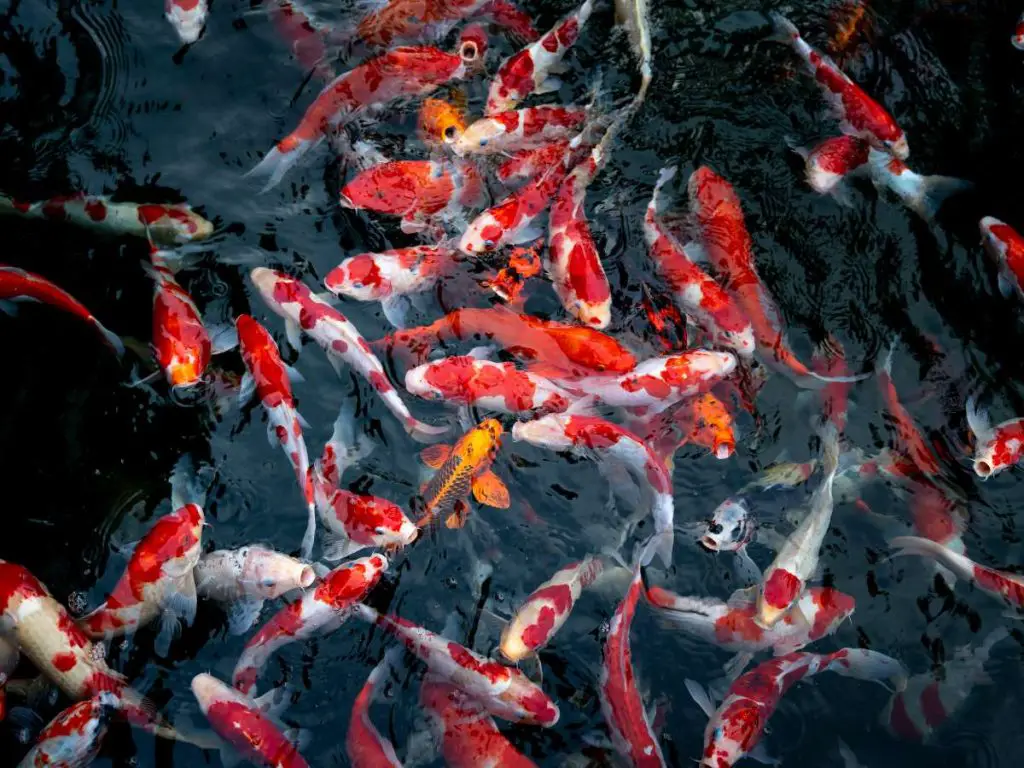
Koi fish may sometimes exhibit aggression and dominance issues, much like any other animal. It’s important to understand the underlying causes of such behavior to effectively address them. One common factor contributing to aggression is the size and gender of the koi fish. Males are generally more aggressive than females, especially during the breeding season. Additionally, larger fish tend to dominate smaller ones, resulting in aggressive interactions.
Curbing aggression in koi fish involves creating a harmonious environment. Providing ample space within the pond can help alleviate aggressive behavior by giving each fish enough room to establish their territory. Adding hiding places such as rocks or plants can also offer refuge and reduce stress-induced aggression. Lastly, monitoring the fish during feeding times can help identify any aggression related to competition for food.
It’s important to note that aggression among koi fish is not always a cause for concern, as some level of assertiveness is normal. However, excessive aggression that leads to injury or stress in other fish should be addressed promptly to prevent further harm.
Excessive jumping or leaping
Occasionally, koi fish may exhibit a rather peculiar behavior of jumping or leaping out of the water. While this can be a source of concern for pond owners, it is a natural behavior for koi fish and can be attributed to various reasons. One common cause of jumping is an attempt to catch insects or other prey that may be hovering above the water’s surface. This behavior is more common during warmer months when insects are abundant.
Another reason for jumping is poor water quality. If the oxygen level in the water is low or there is an imbalance in pH levels, koi fish may resort to leaping to access oxygen-rich air. Therefore, it is crucial to regularly monitor the water quality and maintain optimal conditions for the fish.
To prevent excessive jumping, pond owners can consider installing netting or a cover to limit the fish’s ability to leap out. Additionally, providing ample aquatic vegetation or floating plants can help deter jumping behavior by creating a natural barrier and reducing the visibility of potential prey above the water’s surface.
Abnormal swimming patterns or behaviors
Koi fish are known for their graceful swimming patterns, but sometimes they may exhibit abnormal behavior that warrants attention. Some common abnormal swimming patterns include constant flashing against objects, erratic swimming, or swimming upside down.
Constant flashing against objects, such as rocks or the pond walls, may indicate the presence of parasites or skin irritations . It is essential to regularly inspect the fish for any signs of parasites or infections and promptly treat them to alleviate the discomfort. Thankfully, it can be relatively easy to treat koi flukes, some of the most common parasites.
Erratic swimming can be caused by numerous factors, including poor water quality, stress, or injury. Regularly testing the water parameters and addressing any fluctuations can help prevent erratic swimming behavior. Reducing stressors such as loud noises, sudden temperature changes, or overcrowding can also contribute to improving swimming patterns.
Koi fish swimming upside down can be a sign of swim bladder issues. The swim bladder is a gas-filled organ that helps control buoyancy. If the swim bladder becomes inflamed or damaged, it can result in the fish losing its ability to maintain an upright position. In such cases, consulting a veterinarian with expertise in fish health is recommended to determine the appropriate treatment.
Managing and troubleshooting koi fish behavior
Managing the behavior of your koi fish is essential for their overall well-being and the harmony within your pond. It’s important to create an optimal environment that is conducive to their natural behaviors and address any behavioral issues that may arise. Here are some strategies for managing and troubleshooting koi fish behavior:
Create an optimal environment for koi fish
To ensure your koi fish thrive and exhibit their natural behaviors, it’s crucial to create an environment that meets their needs. Start by providing adequate space for your koi in their pond. A pond that is too small can lead to stress and aggression. Consider the depth and dimensions of the pond, ensuring it offers enough room for these active swimmers.
Another important aspect is water quality. Poor water quality can negatively impact the behavior and health of your koi fish. Maintain a clean and balanced pond by regularly testing the water parameters such as pH, ammonia, and nitrate levels. Install a reliable filtration system and conduct regular water changes to keep the water clean and oxygenated.
Implement behavior modification techniques
If you notice any unwanted behaviors in your koi fish, such as aggression or excessive jumping, there are techniques you can use to modify their behavior. One effective method is through positive reinforcement. Rewarding desired behaviors, such as coming to a designated feeding area, can help reinforce those behaviors and discourage unwanted ones.
Creating hiding spots within the pond can also help reduce aggression. Koi fish are naturally territorial, so providing them with places to retreat and establish their own territories can help minimize conflict. Adding plants, rocks, or other structures can create hiding spots and break up the line of sight between fish.
Seek professional help for complex behavioral issues
While many behavior issues can be managed by pond owners, some complex problems may require the assistance of a professional. If you’re struggling to address persistent behavioral issues or notice signs of illness, it’s important to seek the guidance of a veterinarian or a koi fish expert. They can provide further insight, conduct thorough examinations, and offer targeted advice or treatments.
Unlocking how koi fish act
Understanding koi fish behavior is essential for maintaining their well-being and ensuring successful management. By observing and learning about their behaviors, we can enhance their overall quality of life and address any potential issues that may arise.
In this article, we have explored the importance of understanding koi fish behavior and the benefits it provides. We have discussed daily routines and feeding behaviors, social interactions within koi ponds, and how koi fish respond to environmental changes.
We have also highlighted the significance of specific behaviors, such as signs of stress or illness, and normal behavioral variations among koi individuals. Additionally, we have provided a guide to breeding behaviors, including courtship rituals, nest building, and parental care.
To effectively manage koi fish behavior, we have discussed common problems like aggression and dominance issues, excessive jumping, and abnormal swimming patterns. We have offered tips on creating an optimal environment, implementing behavior modification techniques, and seeking professional help when necessary.
To summarize, understanding koi fish behavior is crucial for their well-being and successful management. Whether you are a pond enthusiast or a koi fish owner, investing time in learning about their behavior patterns and characteristics will lead to a happier, healthier, and more vibrant life for these beautiful creatures.
Key facts covered in this article include:
- Koi behavior guides offer information and guidance on koi fish behavior patterns
- Understanding koi fish behavior enhances their well-being
- Observing behaviors promotes successful breeding and reproduction
- Identifying and addressing behavioral issues is crucial for optimal management
- Daily routines, feeding behavior, and social interactions within koi ponds are important aspects of koi behavior
- Recognizing signs of stress or illness and normal behavioral variations among koi individuals
- Understanding breeding behaviors including courtship rituals, nest building, and parental care
- Common problems with koi fish behavior include aggression, excessive jumping, and abnormal swimming patterns
- Managing koi fish behavior involves creating an optimal environment, implementing behavior modification techniques, and seeking professional help when needed
Related Questions
How can I tell if my koi fish is stressed?
Signs of stress in koi fish can include reduced appetite, lethargy, frequent hiding, color changes, and fin damage. It’s important to monitor your koi’s behavior and look out for these signs, as stress can indicate underlying health issues or problems with their environment. Taking steps to address the cause of stress and create a calm and stable environment can help improve your koi’s well-being.
Can koi fish recognize their caretakers?
Koi fish have the ability to recognize their caretakers to some extent. They can become accustomed to a person’s presence and associate them with food. This recognition is based on visual cues and the koi’s ability to remember patterns and associations. However, it’s important to note that koi fish have limited cognitive abilities, so their recognition is not as advanced as some other animals.


